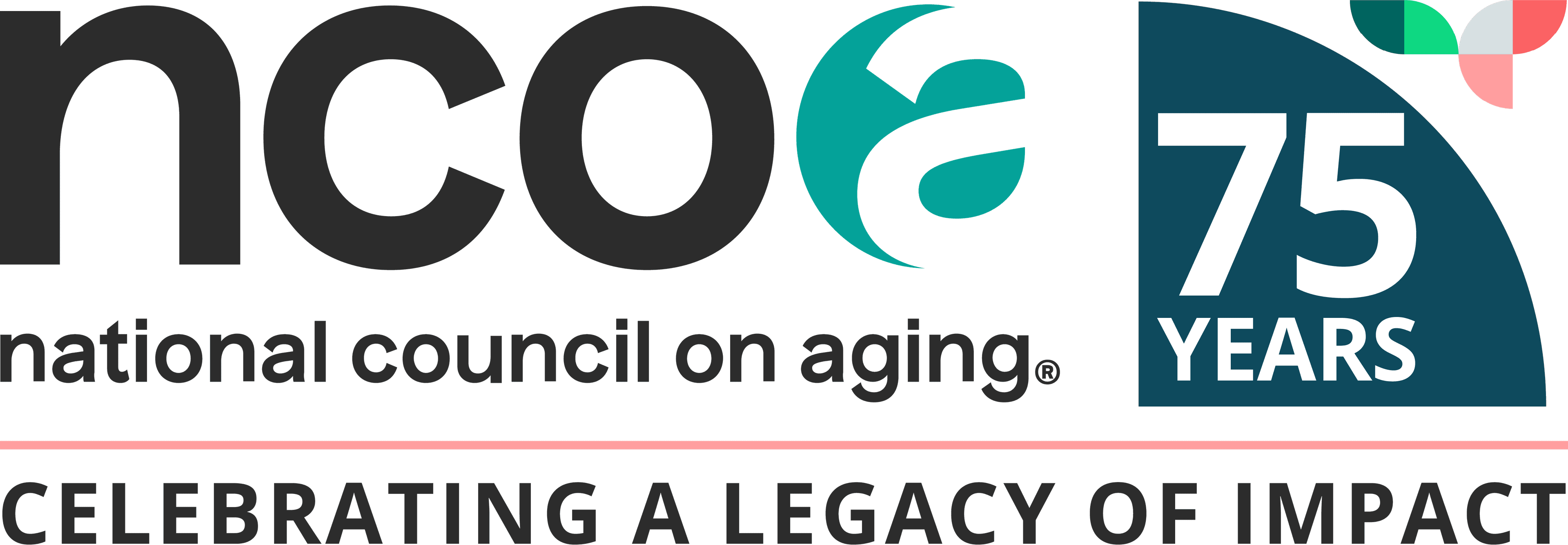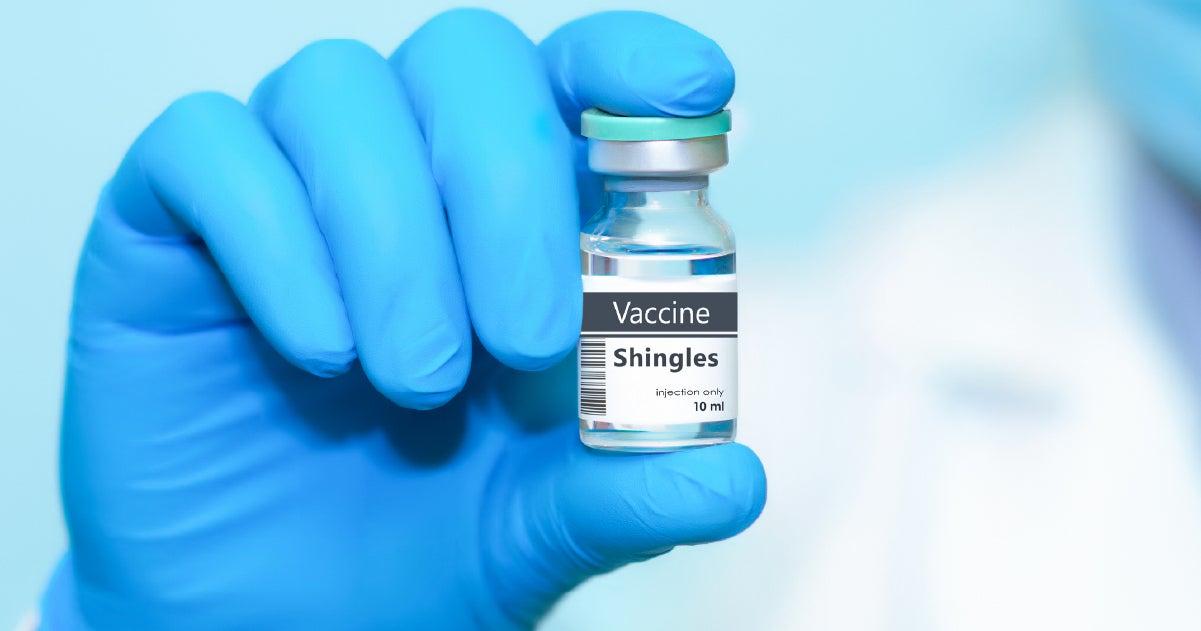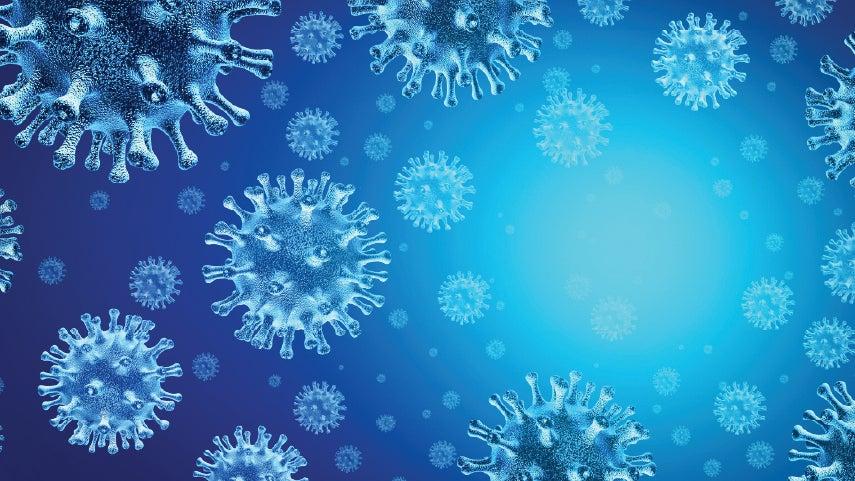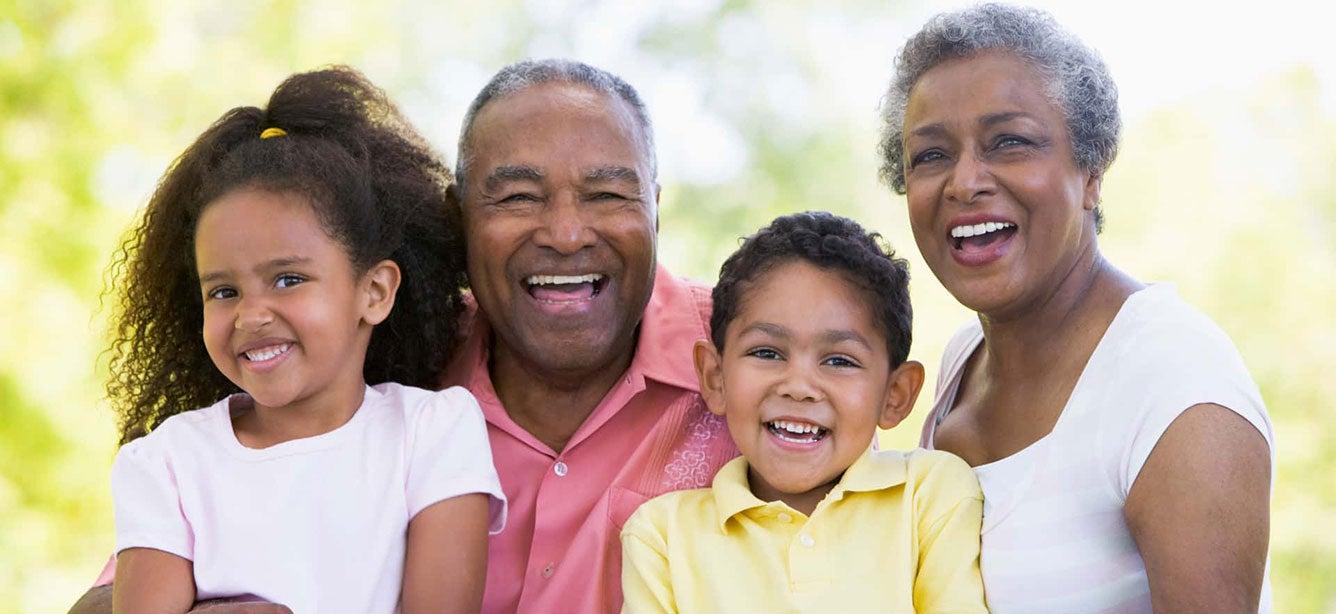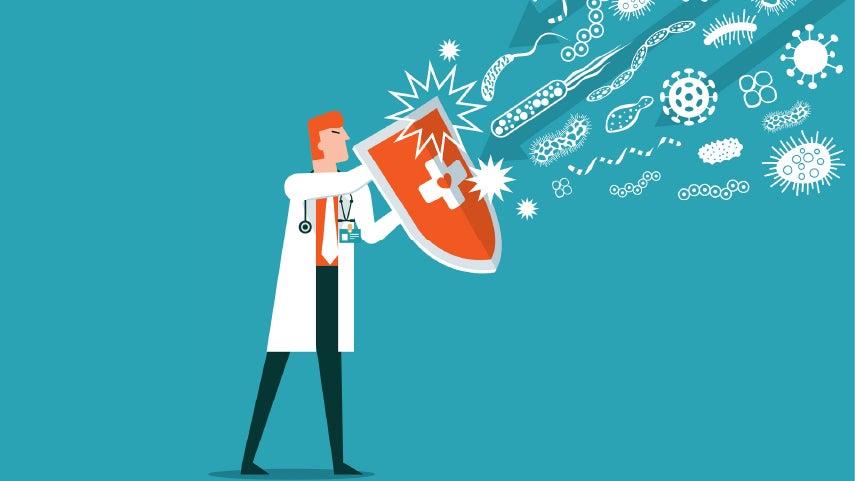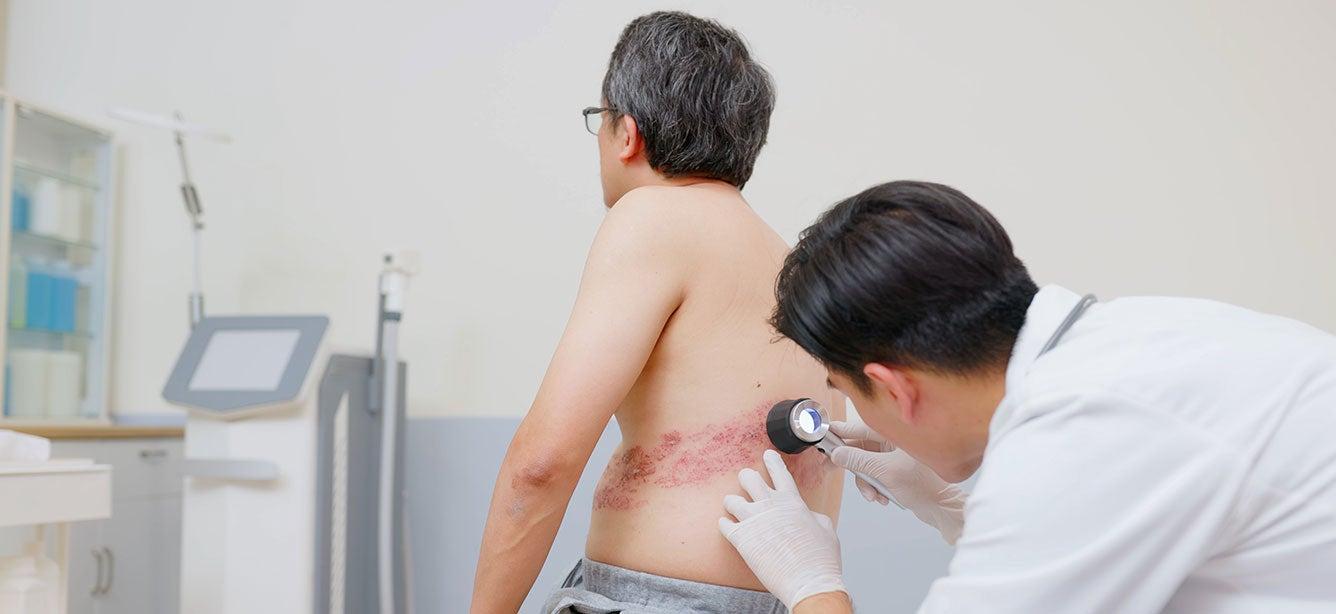
Related Topics
Doctors recommend adults age 50 and older get the shingles vaccine to help prevent this painful and sometimes debilitating condition. And after getting shingles, 88-year-old Jim H., of Bucks County, Pennsylvania, strongly agrees.
His case of shingles began on his chest—as “red blotches that started to have some small bubbles”—and lasted between four to five weeks. Jim considers himself lucky: “I had a pretty mild case of it as far as the pain that other people have experienced.”
Still, he knows the effects of shingles can be serious. And although it is rare to get shingles twice, it is possible to get it again.1 “Get your shingles vaccination,” Jim advises older adults. He has since gotten his.
So, what is shingles, and what should you do if you are among the roughly 1 million Americans who have a shingles outbreak each year?2 Let’s explore the answers to these and other questions you may have about shingles.
What is shingles?
Shingles (herpes zoster) is a viral infection that causes a painful, blistering rash and other symptoms. Shingles is caused by the varicella-zoster virus (VZV), which is the virus that causes chickenpox.
According to the American Academy of Dermatology Association (AAD), if you’ve had chickenpox at any point in your life, you carry the shingles virus. How does that virus turn into shingles? Once you’ve recovered from chickenpox, VZV moves to nerves inside your body and stays there dormant for years. If the virus “wakes up” or reactivates due to stress, illness, age, or other factors, you’ll develop a case of shingles.3
“Normally, the immunity you got back when you had chickenpox keeps the virus under wraps, but every now and then, it can break loose,” Myron Levin, MD, an internal medicine specialist (who helped develop the original shingles vaccine), told UC Health. “Most of the time, we don’t even know this is happening because our immune system squelches it.”
About 1 in 3 people who have had chickenpox will get shingles.2 Most people who get shingles are over the age of 50.4
Is there anything that can be done to prevent shingles?
The best way to prevent shingles is to get the shingles vaccine (Shingrix). The recommended age for the shingles vaccine is 50 and older. Vaccination is also recommended for some adults age 19 and older who have compromised immune systems.
The shingles vaccine is given in two doses separated by two to four months. Adults who are immunocompromised can receive their second dose of the shingles shot one to two months after their first.
The Centers for Disease Control and Prevention (CDC) says Shingrix—which is the only shingles vaccine available in the U.S.—can prevent shingles and long-term nerve pain more than 90% of the time for older adults with strong immune systems.5
Can you catch shingles if you haven't had chickenpox?
If you are an older adult, it’s almost certain you had chickenpox and are at risk for getting shingles, the CDC says: “More than 99% of Americans born before 1980 had chickenpox, even if they don’t remember it.”6 The chickenpox vaccine became available in the U.S. in 1995.7
Who is most prone to shingles?
Researchers don’t know all the reasons why the chickenpox virus reactivates in some people and not others. But they do know that age and the immune system are key factors.
“As people get older and their immune systems weaken, viruses like the one that causes shingles can wake up and do damage again,” Levin explains.
People whose immune systems are compromised by certain cancers, the human immunodeficiency virus (HIV), or medications like steroids, have an even higher risk of getting shingles.1 Physical and mental stress can also raise the odds of getting shingles, due the body's response to stress that can weaken the immune system. And some research has found a link between head trauma among older adults and an increased risk of shingles. Falls are the leading cause of head trauma in older adults.
What are shingles symptoms?
Early signs of shingles include pain, itching, or tingling in the part of your body where a rash will later appear. “Some people have described an ‘electrical sensation’ on their skin before getting the rash,” the AAD writes.8 It may take a few days for rash to appear.
Other shingles symptoms include:
- Pain
- Itchiness
- Fever
- Headache
- Chills
- Upset stomach
Where do you get the shingles rash?
The shingles rash usually develops in a single stripe or band on one side of the body. In fact, that’s how this viral infection got its name long ago. Since the shingles rash commonly emerges in a strip around the torso, Romans named the condition "cingulum"—the Latin word for "girdle."
“They didn’t know what it was, but they recognized it was a disease that older people got,” Levin explains. “And it would hurt around the middle of the body.”
For Jim H., the shingles rash spread across the right side of his chest to the front and back of his right shoulder and the back of his neck.
The rash can also develop on the face, which the AAD calls a “medical emergency.”
Levin says people experiencing shingles symptoms in their eyes should seek medical attention as soon as possible: “You want to see an ophthalmologist to prevent damage to the eye."
How do I tell if my rash is shingles?
An early-stage shingles rash usually looksl ike red or pink blotches that develop fluid-filled blisters, which may be clustered together closely. “Some people get more blisters after the rash appears, so it can seem the rash is spreading,” the AAD says.
What are the stages of a shingles rash?
Over the course of a shingles infection, the AAD says the blisters will crack open, bleed, and scab over, within two to four weeks for most people.8
How painful is shingles?
Some medical experts have put shingles on a list of the most painful medical conditions. People typically experience pain in the area where their shingles rash is located.
For some adults, shingles symptoms are mild and may include itching. Other people aren’t so fortunate—they experience intense pain from the shingles rash that’s set off by a gentle touch or even a breeze.
Levin says shingles symptoms may worsen in the evening: “It’s common for pain to be worse at night. That’s true with many illnesses.”
How do I soothe shingles pain?
Ask your health care provider for recommendations on easing the symptoms of your shingles rash. Ibuprofen or acetaminophen may help with the pain. You may want to try some of these dermatologists’ suggestions from the AAD website:9
- Apply a thin layer of clean, pure petroleum jelly to the rash
- Cover the rash with a new, sterile, non-stick bandage
- Apply a clean, cool, and damp washcloth several times a day for five to 10 minutes at a time
- Soak in a cool, oatmeal bath
- Calm itchy skin by using calamine lotion
- Always wash your hands after touching the rash
There are other ways to take care of yourself, too. The National Institute on Aging (NIA) suggests wearing loose-fitting clothing and doing things you enjoy to divert your attention from shingles: “Watch TV, read, talk with friends, listen to relaxing music, or work on a hobby such as crafts or gardening,” the NIA writes on its website.
Rest, healthy food, mindfulness, and gentle exercise may also help. “Avoid stress,” the NIA says. “It can make the pain worse.”
What should I do if I think I have shingles?
If you think you have a shingles rash, talk to your health care provider as soon as possible. How do you treat suspected shingles? There are antiviral medications you can take (e.g., Acyclovir, Valacyclovir) that may shorten the duration and lessen the severity of shingles symptoms. But you must start taking them within 72 hours of developing a rash.
It’s important to understand that antiviral medications can help reduce initial symptoms and prevent new blisters from forming—but they are not a cure for shingles. Your best defense against shingles or a recurrence is prevention through the two-dose shingles vaccine.
Is shingles contagious?
You can’t catch shingles from another person. But if you’ve never had chickenpox or the chickenpox vaccine, being exposed to someone with shingles could give you chickenpox. Later in life, the varicella-zoster virus that caused the chickenpox can reactivate and cause a case of shingles.
The shingles virus can spread in two ways: by touching the fluid from shingles blisters or by breathing in particles from the blisters.
To keep from spreading the virus that causes shingles, the CDC offers these recommendations:1
- Cover the rash
- Avoid touching or scratching the rash
- Wash your hands often, for at least 20 seconds
- Avoid contact with: pregnant women who never had chickenpox or the chickenpox vaccine; premature or low birthweight infants; and people who are immunocompromised
What are the lingering symptoms shingles?
Do you ever fully recover from shingles? While most people recover from shingles within a few weeks, some experience long-term effects that can be serious and sometimes fatal (fewer than 100 people die from shingles each year.10)
Complications from shingles include:11
- Postherpetic neuralgia (PHN), or long-term nerve pain. This is the most common complication. Older adults have a higher risk of developing PHN, which about 10% to 18% of people get after having the shingles rash.
- Pneumonia
- Hearing problems
- Vision problems
- Encephalitis (brain inflammation)
“If you want to protect yourself from the pain of shingles and its potential serious complications, your best bet is getting the shingles vaccine,” says Dorothea Vafiadis, Senior Director of NCOA's Center for Healthy Aging. “Like all preventive vaccines, it’s a simple but very smart way to protect your long-term health and well-being.”
Not only does the two-dose shingles vaccine protect us from shingles; new research shows it may also help reduce our risk for dementia.
Can the shingles vaccine prevent dementia?
A 2024 study found that older adults who received the Shingrix vaccine had a 17% lower risk of dementia compared to those who took the since-discontinued Zostavax shingles vaccine.12 This protective effect was significantly stronger in women than in men, possibly due to differences in immune response.
And if that’s not reason enough to roll up your sleeve, here’s even more good news: the two-dose Shingrix vaccine has also been linked with a significantly reduced risk of heart attack and stroke.
“I’ve never seen a vaccine that works so well in older people,” Levin remarks. “And it works just as well in younger people for that matter. It’s one of the best vaccines we have.”
Haven’t had your shingles shot yet? Find a vaccination site near you today and schedule an appointment using the shingles vaccine locator tool. Medicare fully covers the cost of Shingrix, as do most state Medicaid programs for people age 50 and older. Most private insurance plans cover the shingles vaccine as well.
Sources
1. Centers for Disease Control and Prevention. Cause and Transmission. Found on the internet at https://www.cdc.gov/shingles/about/transmission.html
2. Centers for Disease Control and Prevention. Shingles (Herpes Zoster). Found on the internet at https://www.cdc.gov/shingles/index.html
3. American Academy of Dermatology Association. Shingles: Who Gets and Causes. Found on the internet at https://www.aad.org/public/diseases/a-z/shingles-causes
4. National Library of Medicine. Shingles. March 29, 2023. Found on the internet at https://medlineplus.gov/shingles.html
5. Centers for Disease Control and Prevention. Shingles Vaccination. Found on the internet at https://www.cdc.gov/vaccines/vpd/shingles/public/shingrix/index.html
6. Centers for Disease Control and Prevention. About Shingles (Herpes Zoster). Found on the internet at https://www.cdc.gov/shingles/about/index.html
7. Centers for Disease Control and Prevention. Chickenpox Vaccination: What Everyone Should Know. Found on the internet at https://www.cdc.gov/vaccines/vpd/varicella/public/index.html
8. American Academy of Dermatology Association. Shingles: Signs and Symptoms. Found on the internet at https://www.aad.org/public/diseases/a-z/shingles-symptoms
9. American Academy of Dermatology Association. Shingles: Tips for Managing. Found on the internet at https://www.aad.org/public/diseases/a-z/shingles-self-care
10. Centers for Disease Control and Prevention. Shingles Burden and Trends. Found on the internet at https://www.cdc.gov/shingles/surveillance.html
11. Centers for Disease Control and Prevention. Complications of Shingles. Found on the internet at https://www.cdc.gov/shingles/about/complications.html
12. Maxime Taquet, et al. The recombinant shingles vaccine is associated with lower risk of dementia. Nature Medicine. July 25, 2024. Found on the internet at https://www.nature.com/articles/s41591-024-03201-5
